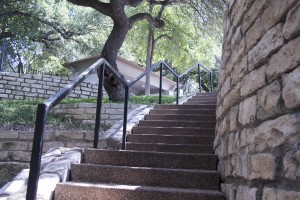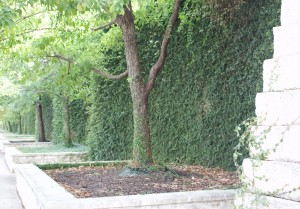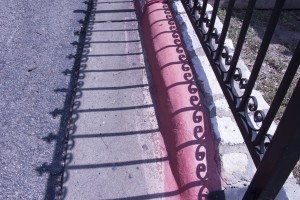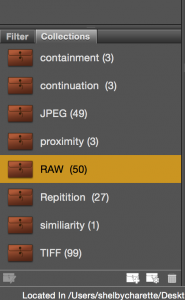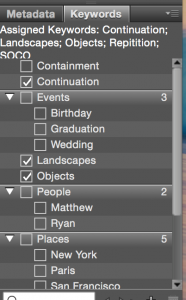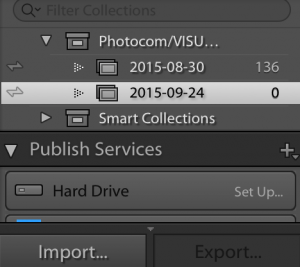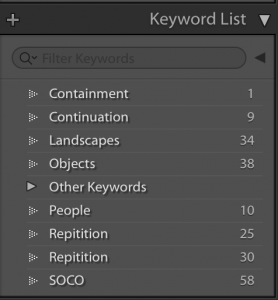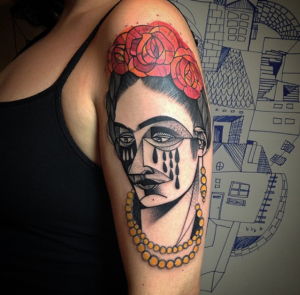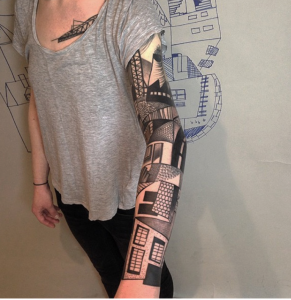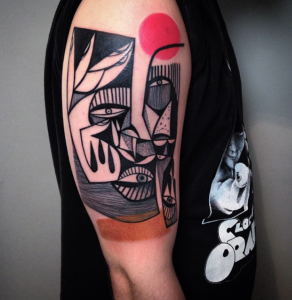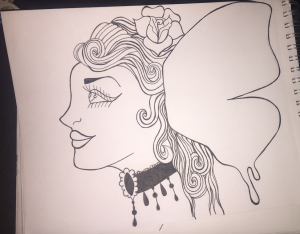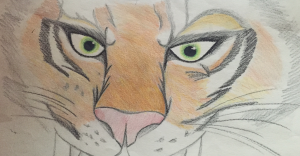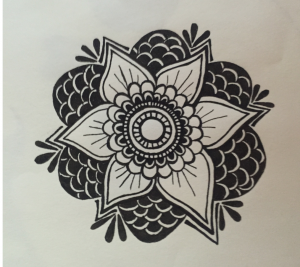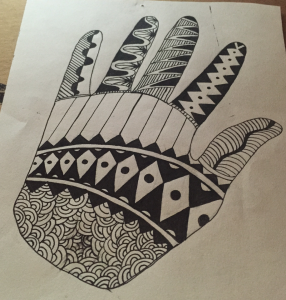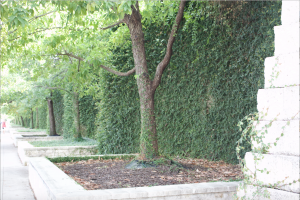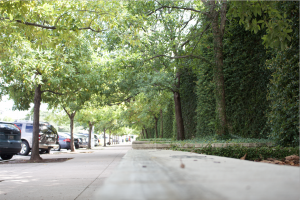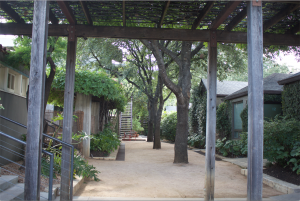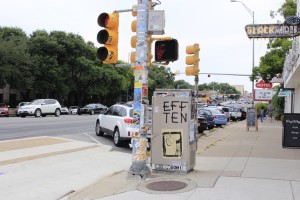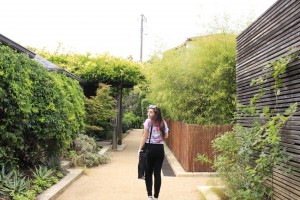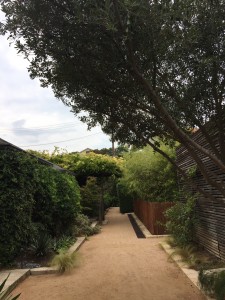Dan Phillips Ted Talk
Shelby Charette
VISU
Robertson
October 6, 2015
Dan Phillips Ted Talk
Dan Phillips takes home building to a whole new level with his work with reclaimed and recycled materials. He uses objects most people would not usually use, in order to create these unique and fascinating homes. Usually, people prefer standard looking homes that are completely symmetrical and perfect, but that is not Dan’s goal. He creates homes that nobody has ever seen before, ones that are one of a kind.
Dan first talks about how much waste is in the building industry. Waste has pretty much become second nature to us, as if to say, if we don’t like something, we can just throw it out and get a new one, which is a completely valid point. Our society does not view waste as waste, we view it as ineffective, broken, or unnecessary. If something doesn’t work, we replace it with a better one and discard the other.
Two perspectives are brought up when talking of symmetry and asymmetry. The two perspectives are apalonian perspective and dianesian perspective. Apalonian perspective is thought to be more of structured, symmetrical, and a desire for perfection, while dianesian, is the complete opposite. It consists of asymmetry, and natural patterns. Apalonian perspective causes more waste than dianesian, because, again like explained above, if it is not perfect, they will throw it away and try again. Dan’s houses follow the dianesian perspective perfetly, because he goes with the natural flow of things, and uses all of his materials.
The view Dan has on our building industry is extremely informative, and eye-opening. He believes in the cause of recycling, and managing our waste, because it is not just Americans who have issues with waste, it is a world wide issue.
Blog Post #5 VISU1100-01
Part One:
Our goal for our assignment in our Visual Studies class was to take images that include Gestalt’s Principles and explore the question of “how do you make an image?”
I went about this goal by exploring congress, and taking images that include both repetition and continuity. Then, I arranged all six pictures together, in order to achieve a similar pattern. I experimented with angles, objects, lines, and light. Eventually I ended up narrowing my photographs down to the ones I found were the best and used them in my project. The question of “how do you make an image?” I find is too ambiguous. There are many factors that play into the creation of an image and therefore thought that ignored to make an image, one must use a variety of elements, such as lighting, point of view and incorporating one or more of Gestalt’s principles into the image.
Part Two:
In the six photographs that I chose for my project, there are both strengths and weaknesses. A bold strength in the photographs is the strong repetition and continuity within them and also how well they work together side by side. Although they are strong together, their weakness is the fact that they are not too interesting apart. The composition of the photographs could be improved by having a person view my photographs in order to help me see my downfalls which will allow me to fix them. The project could have been more upfront and clear. I was confused throughout the entire project on what the actual objective was and did not find out until the very end

Visual Studies I Project: Gestalt by Shelby Charette
My photographs below focus on Gestalt’s principles of repetition, and continuity. They come together in a compilation that compliments one another. My photos grouped together use repetition and continuity, the two principles together along with different perspectives create a flowing direction in which the eyes follow. The photograph of the trees is especially interesting because it looks as if it could go on forever, like the way a mirror facing another mirror repeats images. The photo of the bicycle tires draws the viewers eyes to the center, as if to make the surrounding circles form a spiral. Unlike the other photographs, the line of continuity in the staircase photograph curves, leading the eyes into what seems like a mystery. Each of the photographs embody Gestalt’s principles of repetition and continuity in their own distinct ways.
Below are my collections and keywords in both Bridge and Lightroom.
Blog Post #4: VISU1100 01
Shelby Charette
VISU1100 01
Hammonds
September 27, 2015
Blog Post 4 Part 1
Looking at the upper classman work made me realize I still have so much time to grow and develop my skills as an artist. Their work was so professional and strongly developed, and their advice really helped me evaluate my choices of my use of time and helped me realize that I need to experiment more with materials and step outside of my comfort zone. Each had similar ideas to portray although their styles were completely unique. Rachael unfortunately did not show us her work, although went very well in depth with her presentation. Caelan showed their work very briefly, although her painting and her ideas for her senior project were very in-depth. Shelby’s work is a lot like the work I plan to do, since I am a Graphic Design major, her work was very colorful and even though her work is mainly online, she implemented drawing and painting elements to her work. Although in Graphic Design as well, Paul Young’s work was exceedingly different. He designs beautiful posters and logos. Both Christin and Juliana use photography as their main artwork, although have completely different styles. Juliana takes abstract and very colorful photos, while Christin takes only black and white photos of her main subject. All of the students had wonderful art, and most importantly, they shared their art with us to give us hope for our ventures into the artistic world.
Blog Post 4 Part 2
http://www.yasoypintor.com
I find this art blog very compelling, because it seems to be a just starting blog. I really like the simlpicity of their layout. The content of the blog contains abstract painters, blogs, art, and shows interesting exhibits and workshops to attend.
http://artscenetoday.com/artist_resources/art-related-blogs/
I chose this website in particular for its wide variety of resources. It is not an art blog, but more of a promoting blog for artists, it also has different categories, such as art history, art education, for artists/by artists and many more.
http://www.theartleague.org/blog/
The Art League is more of a way to get artists involved, it has artists needed ads, and daily updates and news. This website is very useful for pretty much anybody, although catering mostly to the artistic part of the community, it is not limiting people that just want to be involved. I believe this is a great way to be a part of the community and to help people get out of their comfort zones.
creativeboom.com
This website is actually a very unusual one, it does not display art, but it is a website to help artists who have a creative block. Every artists, or atlas most of them, have encountered creative block sometime or another, and this website helps get creativity flowing and allows the ideas to flow more smoothly than to be forced. I believe this is a great tool for all artists.
VISU1311 Blog Post 7
Shelby Charette
VISU1311
Robinson
September 22, 2015
Medium is the Message Analysis
Throughout “The Medium is the Message,” the main idea stressed is the effect media has on humans. Through the development of technology, man has altered life to fit it. We change with technology, not the other way around. I certainly agree with the idea of humans adapting to fit technological needs, our society is constantly looking for ways to improve our lives by improving technology, but technology is not always what will help us.
While listening, I often found myself lost, confused, and unable to comprehend what I was witnessing. The speakers were speaking philosophically and talking of abstract ideas, but with all of the befuddling noise, I found myself listening to the noises more than the actual ideas they were trying to convey. Even when I read, I found myself over visually stimulated, finding it excruciatingly hard to focus on what the words.
Although, I did happen to hear one bit of information I believe is very crucial, and it was the explanation of how artists are contradictory. They spoke of how artists exploit situations and ideas people do not wish to know. In fact, that might be a reference to the artists who made this.
Altogether, I was unable to gather much information about the topic, but the main ideas I took from “The Medium is The Message,” is the effect technology has on human society, and how art embodies controversial issues most people will not accept.
VISU1100-01 Blog Post 3
While looking through the art blog Colossal, I came across a lot of wonderful paintings and photographs, although one artist caught my eye, Peter Aurisch. He is a tattoo artist in Berlin, Germany and specializes in unique Picasso-like tattoos. He incorporates geometric shapes and astounding color to create an abstract tattoo that very much resembles Picasso’s work. The reason I love his work, is because most people do not use such abstract designs as a tattoo. Anyone can paint a picture, although not many people can incorporate this style of art into tattoo designs. The detail, the immense color, and the uniqueness of his work is truly eye catching.

VISU1100 01 Blog Post #2
When it comes to drawing, I prefer black ink and paper. Almost all of my drawings are black ink and paper, not because its the only thing I’m good at, but because it is so raw in my opinion, much like black and white photographs. I do not have much of my art with me, but I do have some very old pieces I’ve drawn. The lady drawn was actually inspired by another painting that dazzled me. The Tiger and the woman drawings are have yet to be finished, although even when unfinished, the black and white drawings show my strength with drawing accurate lines.
VISU1311 Blog Post 4,5,6
Shelby Charette
VISU1311
Robertson
September 8, 2015
Blog Post #4, #5,#6
In Amy Tan’s Ted Talk, Stan Brakhage’s “Stellar”, and Soundcloud recording of Spoon’s creation of the song “Inside Out,” we see much of Gestalt’s theories in play, applying to media not only visually, and mentally, but also when listening to the audio recording of Spoon. It was not easy finding out how the Gestalt Principles applied to this content we were given, but I may have been over-thinking it. All three mediums, Amy Tan’s Ted Talk, Stan Brakhage’s video “Stellar,” and Spoon’s recording of “Inside Out,” all apply specific aspects of Gestalt’s theories to their creations.
In Amy Tan’s Ted Talk, she discusses creativity and questions the meaning of creativity and what it takes to make oneself creative. Her entire lecture consisted of her journey into figuring out her own creativity. She explained her questions and concerns about the meaning of the word, she explained how her life events impacted her definition of creativity and explored the ambiguity of the subject. Although throughout the lecture, one thing was represented mainly, and it was perspective. Perspective in Gestalt’s theory and in our project we are currently working on, perfective/point-of-view are a very vital part of the entire ordeal. Amy Tan creates her own perspective on creativity, based on her experiences, her knowledge, and everything in between. She bases her entire idea of creativity solely based on only one thing: her view of it. She continues throughout the lecture questioning how we develop creativity, while explaining her entire process of her finally reaching her own definition of creativity.
Stan Brakhage’s creation “Stellar,” can be seen as confusing and extremely abstract, and it very well possibly be the entire point of the video. Breakage uses abstract, colorful illustrations in his silent videos to intrigue the viewer and leave them to interpret. His art is made in order to look similar to what he’s trying to convey, yet not exact. He uses Gestalt’s principle of similarity to let the viewer interpret his work and piece the puzzle together without the help of an explanation. Since his work is extremely abstract, it is almost completely dependent on perception, which also embodies an important part of Gestalt’s theory.
Spoon’s podcast of the creation of their song “Inside Out,” shows their artistic expedition from just a thought into a final product. They explain that the thought for the song began by just a thought of a simple vocal and guitar, and explains how the more they thought about it, tested ideas, added instruments, added synthesizers, and digital drums, into a medley of complimentary beats that eventually created a fantastic song. They used Gestalt’s principal of proximity by adding multiple effects to create a harmonious and appealing sound to the song. It sounds ridiculous to apply this principle to music, although when thinking about the definition of proximity, it is considered elements being either placed close together or apart, and the viewer, or listener in this case, groups the music notes together creating a song.
Finally, the videos and podcast all reflected principles of Gestalt’s theory within them thus showing us that in whatever art we look at, whichever medium we use, we can find some sort of representation of Gestalt’s principles.
VISU1311: Creative Blog #3
Shelby Charette
Robinson
VISU1311
August 30, 2015
What is Design?
Kenya Hara, in his work “What is Design”, thoroughly covers design history and progress over the years, from the beginning until now. He explains design from the beginning, how, from the use of our hands and tools we have evolved enormously into a primarily technology based driven environment and everything in between. “What is Design?” was a truly fascinating read, it covered even the most basic characteristics of design and explaining the importance of even the most minuscule everyday items and how they have been influenced by design and goes on to explain how the foundation was built for design today.
It is very interesting to see how design has flourished and seeing the influences that change it. As Hara states, our first tools were our hands, now looking at our society, technology is the one of the main influences on design. Although seeming like a technology based field, Hara declares that design will never depend solely on technology. He emphasizes that “design is not subordinate to media; design explores the essence of media (Hara, 436).” Design depends not only on technology but also on the economy, time, with our environments, and our resources, such as how war effected design throughout the century.
Even as technologically advanced as our generation is, Hara emphasizes how no matter how advanced we think we are, things will keep evolving and changing. Each generation gains more intelligence and has a more open environment to explore design, therefore gaining more knowledge about design and how to use their resources to create something ground-breaking. We learn to harness new resources, we learn to conquer new technologies, we constantly adapt and strive for better.
Lastly, Kenya Hara’s evaluation, summary, and explanation of design’s lengthy past from the beginning, describes the foundation on which design was created and has become what it is today. Our society will continue to forever keep improving and using our resources to our advantage to create more and more superior designs.
VISU1311 Blog Post #2
Shelby Charette
August 30, 2015
Robinson
VISU1311
Creativity Blog #2: High Concept High Touch
Throughout Daniel H. Pink’s writing, he expresses the significance and difference of both L-Directed thinking and R-Directed thinking. L-Directed thinking, refers to a more logic-based, and emotionless side of thought, while R-Directed thinking is a more empathetic, creative, and emotional way of thought. Throughout Daniel H. Pink’s analysis of the evolution of society from uniform thought, like from the Agricultural age, to today’s Conceptual age, a more broad and artistic approach to thinking; Pink shows the intensifying use of R-Directed Thinking that is being used today, along with the changes it is creating in society.
The importance of the R-Directed thinking is not only being used primarily by artists, but is being currently implemented in places such as medical schools, to broaden the way of thinking and stray from a uniform point of view and be used to find alternate solutions to issues. The population of the “creatives” is booming (Pink, 56). The subcultural creative thinkers are allowing businesses to expand, jobs to be created, and industries to bloom. Most products on the market today are mainly made to appeal to the aesthetic and useful side that consumers want. Therefore, the L-Directed thinkers and R-Directed thinkers in this case, work together to create a product that is useful, productive, and revolutionary (L-Directed), while the R-Directed thinkers make the product visually striking to appeal more to their target audience.
The use of R-Directed thinking being implemented into standardized testing could very well benefit the creative thinkers of the future. Pink states that only about 4-10% of IQ actually is related to your career (Pink, 58), yet standardized tests mainly focus on logic based questions, to evaluate the effectiveness of the L-Directed thinker. Our generations are evolving their processes to thinking, becoming more abstract than logic based, therefore the sooner we help implement creative thinking into learning than the more successful the next generations will become.
Ultimately, the influence this thought process has on our society today is monumental. It is changing almost everything we know; from jobs, to industries, and just the overall concept of thought. This R-Directed thought process is opening up opportunities for all creative thinkers.
VISU1100: Blog Post #1
- What are the main points of each article? The main prominent points each article, is to somewhat compare the two careers. It shows how strikingly similar they can be, showing an uncanny amount of shared qualities between them. It also implies the growing popularity of art as a career and how incredibly closely related they are to one another. When reading the article, I believe that I feel as if it should persuade people to respect artists more than they usually do. It shows them as more of a vital, and important part of society by comparing them to the entrepreneurs since most people do not see artists in that way.
- What can artists learn from their “entrepreneurial cousins”? Artists, mainly are isolated by choice, although in order for them to succeed as an entrepreneur, they would need to learn to accept assistance and learn to work in teams.
- Do you agree that artists are entrepreneurs? why? I agree that artists are entrepreneurs, because in order to sell, advertise, or promote their art, they have to know how to intrigue their target audiences. This did not used to be the case back in the day, but with modern technology, their options to find ways to sell/promote are limitless.
- Which of the 12 characteristics of artists do you agree with? I agree with all twelve characteristics, because I understand the reasoning on why artists and entrepreneurs are alike. Although if I had to choose one particular characteristic that I believe fits best, would be that artists are passionate ability their work. For an artist, their world revolves around their art. They are always looking for new ideas and always thinking about their art, it is a large part of them.
- What others would you add to the list? Both entrepreneurs and artists need to be open to see from a different perspective. I believe perspective is important because for an entrepreneur, if something they’re working on is not working, they will have to trouble shoot or look from a different perspective, such as a client’s perspective to see what changes need to be made in order to improve their product. This also applies to artists, for them to fix a problem or improve, they would need to see their work from a different perspective. Most people are stuck in their ways, but being open to perspective can allow a chance to improve what needs to be improved upon.
- Additional notes. The article was very informative. It really looked at artists as more of a professional career, rather than a hobby.
Part 2-
- I have grit, but I would like to work on managing my stress levels. I stick to what I need to do and I am diligent, but I need to work on stress levels.
- Working with a strict schedule along with necessary relaxation could improve my ways of dealing with stress and keeping myself on track.
Visu1311: Blog Post 1
Shelby Charette Charette 1
August 25, 2015
Robinson
Visual Studies 113
In Vilem Flusser’s work, “The Photograph,” the views of photographs are deeply contrasted from the perspective of the artist and a conventional person. Flusser criticizes the naiveté shown from an ordinary person, how a picture is, just that; a picture. When seen though the eyes of an artist, it is art, it has meaning, it tells a story.
While Flusser is always searching for the deeper meaning, he realizes that not everything is merely just black and white. There is not just one right answer, its as if the possibilities are endless. Flusser, although seemingly critical of the simple point of view, appears to have a sense of curiosity, as if to say, “What would it be like if I saw things that way? To be able to look at a tree and not seek any deeper meaning, but to just admire it”.
Flusser explains the dependence the photographer has with his or her camera and the relationship they share. He explains the balance in the relationship, how they are both immensely dependent on one another. The photographer, uses his or her camera to capture the intended images, while the camera needs the photographer to use it to its full potential in an effort to expand and broadcast the significance of art.
Therefore, Flusser deeply analyzes the diverse characteristics and significance of perspective, and the relationship between an artist, their art, and the audience.



